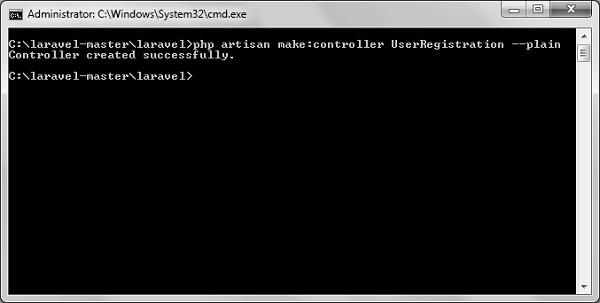Laravel - Request
In this chapter, you will learn in detail about Requests in Laravel.
Retrieving the Request URI
The “path” method is used to retrieve the requested URI. The is method is used to retrieve the requested URI which matches the particular pattern specified in the argument of the method. To get the full URL, we can use the URL method.
Example
Step 1 − Execute the below command to create a new controller called UriController.
Step 2 − After successful execution of the URL, you will receive the following output −
Step 3 − After creating a controller, add the following code in that file.
app/Http/Controllers/UriController.php
Step 4 − Add the following line in the app/Http/route.php file.
app/Http/route.php
Step 5 − Visit the following URL.
Step 6 − The output will appear as shown in the following image.

Retrieving Input
The input values can be easily retrieved in Laravel. No matter what method was used “get” or “post”, the Laravel method will retrieve input values for both the methods the same way. There are two ways we can retrieve the input values.
- Using the input() method
- Using the properties of Request instance
Using the input() method
The input() method takes one argument, the name of the field in the form. For example, if the form contains a username field then we can access it in the following way.
Using the properties of Request instance
Like the input() method, we can get the username property directly from the request instance.
Example
Observe the following example to understand more about Requests −
Step 1 − Create a Registration form, where the user can register himself and store the form at resources/views/register.php
Step 2 − Execute the below command to create a UserRegistration controller.
Step 3 − After successful execution of the above step, you will receive the following output −

Step 4 − Copy the following code in
app/Http/Controllers/UserRegistration.php controller.
app/Http/Controllers/UserRegistration.php
Step 5 − Add the following line in app/Http/routes.php file.
app/Http/routes.php
Step 6 − Visit the following URL and you will see the registration form as shown in the below figure. Type the registration details and click Register and you will see on the second page that we have retrieved and displayed the user registration details.
Step 7 − The output will look something like as shown in below the following images.

